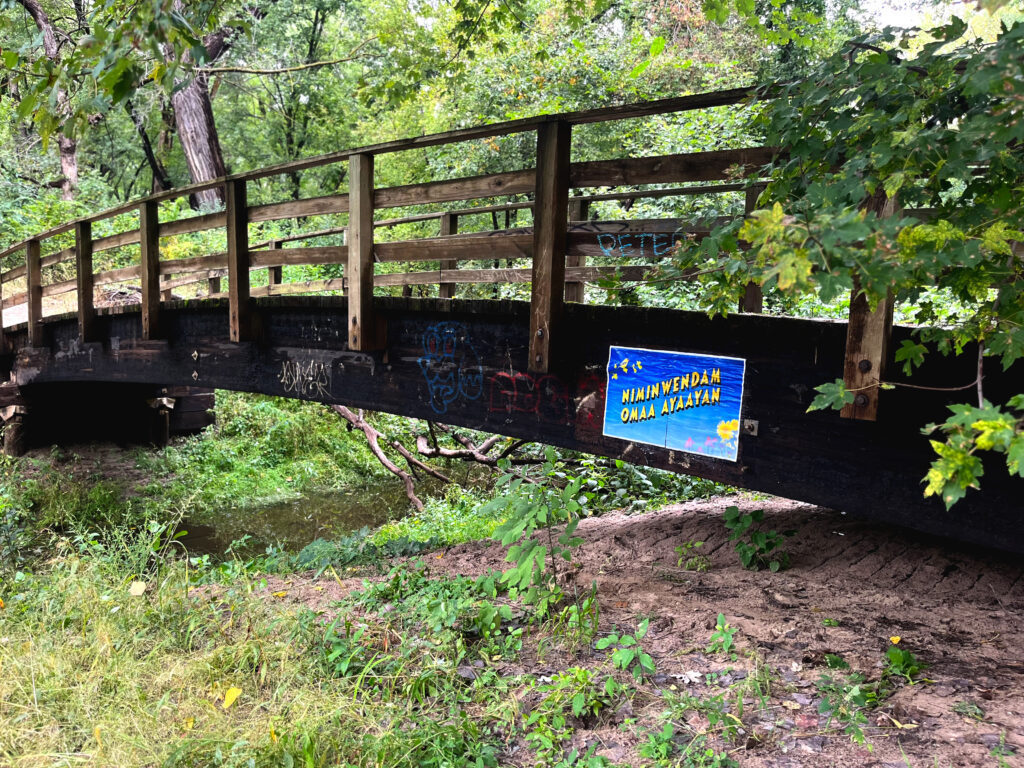Messages of Love and Hope on Native Land
By Racquel Banaszak

The first time I remember seeing Ojibwemowin written on a sign was when I was picking up my niece from her kindergarten class in south Minneapolis. Placed among the sunflowers and purple coneflowers in school the school garden was “Miigwech, thank you!” in carefully handwritten letters. Although it may have seemed simple, I instantly wanted to know more. I didn’t get to grow up with my Indigenous language and seeing it in a space created with good intentions for our young ones made my heart feel something I had never felt before.
The first time I remember seeing Ojibwemowin written on a sign was when I was picking up my niece from her kindergarten class in south Minneapolis. Placed among the sunflowers and purple coneflowers in school the school garden was “Miigwech, thank you!” in carefully handwritten letters. Although it may have seemed simple, I instantly wanted to know more. I didn’t get to grow up with my Indigenous language and seeing it in a space created with good intentions for our young ones made my heart feel something I had never felt before.
Perhaps one of the most amazing aspects is the fact that it was on the grounds of a
public school. Education has a long and complicated place in Native communities.
Before Western education systems, we learned all about our world from our
communities including elders, aunties and uncles, parents, siblings, and cousins.
From a young age we were raised with teachings of how to live a good life. As time
went on missionaries and the United States government sent us to schools based on
Euro-American ideologies thereby systematically separating us from our
communities, epistemologies, cultures, and languages.
Every single Native person today is still living with the effects of these schools. They
contributed to Indigenous erasure and our ongoing struggles for Indigenous
sovereignty. The invisibility of Indigenous people is a pervasive issue that has
devastating impacts across Native communities. We deserve to be acknowledged,
cared for, and uplifted.
As a visual artist and public historian, I believe that having a strong Indigenous visual
representation in public spaces is essential to a brighter and more just future. We
deserve to see our languages shown on these landscapes, after all our languages
come from the land itself. Native people are essential to healthy relationships with
the lands, water, and our more-than-human relatives that make our existence
possible. The public needs to support Native artists and communities and our visions
for Indigenous futures.
Indigenous art can be rooted in our ancestral visual culture and as well as speaking
to our contemporary lived experiences. Indigenous public art has the ability to create
critical dialogue around harmful systems and address our collective trauma. We can
visibly create spaces where our stories are told and our ways of knowing are valued.
Public art can simultaneously be a celebration of Indigenous people and also give
visibility to Indigenous histories, cultures, and languages. It has been more than 15
years since I saw that garden sign, but I still think back to how my heart felt when I
knew that someone cared deeply enough to make our existence visible.



Raquel, thank you for sharing your work with us. Your description of the role/position of public art as it relates to visualizing/visible-lizing Native life, and the ways you relate this critical process of making-visible to the long history, and ongoing colonization of Indigenous folks, particularly as it relates to education, offers a powerful, yet direct way to (partially) contend with such harms. As you put it, the role of such art to “create critical dialogue” is something I find imperative to all public facing work that invites an array of voices. I am also thinking about the experiential power offered to us by various senses as it relates to your work. I appreciate the anecdote that through-lines your writing here and look forward to learning more about your work.
Racquel, Messages of Love and Hope on Native Land was such a movingly rich read—it really resonated with me. For instance, I felt the heartwarming reaction you described when you read the thank you message in your Indigenous language. Your young niece being able to experience the embrace of her/your Indigenous culture makes such a world of difference—you are a great example of the profound impact of seeing those words 15 years later!
Your innovative research approach, fusing history and art to transform public spaces—is a much-needed counteracting force that will help, as you note, to fill the Indigenous knowledge void created by missionaries, a colonial government, and Westernized education. I cannot wait to follow along with your journey and witness your project prompt illuminating “critical dialogue…to address collective trauma.”